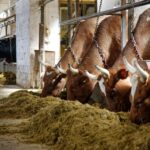Growing wheat can be a rewarding and profitable agricultural endeavor. However, it requires careful planning, knowledge, and preparation to achieve successful results. Whether you’re a novice farmer or considering adding wheat to your crop rotation, here are ten crucial things you should know before growing wheat:
- Climate and Growing Conditions: Wheat is a cool-season crop that thrives in temperate climates. It requires cool temperatures during the growing season, typically between 50°F and 75°F (10°C to 24°C). Understand your region’s climate, including temperature fluctuations, rainfall patterns, and the length of the growing season, to ensure it is suitable for wheat cultivation.
- Soil Requirements: Wheat prefers well-drained soil with good fertility. Conduct a soil test to assess its pH level, nutrient content, and organic matter. Wheat generally performs best in soils with a pH range of 6.0 to 7.5. Adequate soil preparation, including proper tillage and weed control, is essential for successful wheat production.
- Varietal Selection: Selecting the right wheat variety is crucial for optimal performance. Consider factors such as yield potential, disease resistance, maturity length, and quality characteristics. Consult with local agricultural extension services, seed suppliers, or experienced farmers to identify suitable wheat varieties that are well-adapted to your region.
- Seed Quality and Treatment: Use high-quality seed to ensure a good start for your wheat crop. Ensure the seed is free from diseases, weed seeds, and other contaminants. Consider seed treatments to protect against seed-borne diseases and pests, improving germination rates and early crop establishment.
- Planting Timing: Timing is critical when it comes to planting wheat. Plant too early, and the crop may be vulnerable to frost damage; plant too late, and it may not achieve optimal growth before unfavorable weather conditions set in. Determine the ideal planting window for your region based on climate, soil conditions, and the specific wheat variety you’re planting.
- Fertilization and Nutrient Management: Understanding the nutrient requirements of wheat is essential for achieving optimal yields. Conduct a soil test to assess nutrient levels, and fertilize accordingly. Commonly required nutrients include nitrogen, phosphorus, and potassium. Develop a fertilization plan that meets the specific needs of your wheat crop and ensures balanced nutrition.
- Weed, Disease, and Pest Management: Implement effective weed control strategies to minimize competition and maximize wheat yields. Familiarize yourself with common weeds, diseases, and pests that affect wheat. Implement integrated pest management practices, including cultural, biological, and chemical control methods, to prevent or manage these challenges.
- Water Management: Manage water carefully throughout the growing season. Adequate moisture is critical during key growth stages, such as germination, tillering, and grain filling. Monitor soil moisture levels and apply irrigation when necessary. However, avoid overwatering, as excessive moisture can lead to diseases and lodging.
- Harvest and Post-Harvest Handling: Timing the harvest is crucial to ensure optimal grain quality and minimize losses. Harvest when the wheat is fully mature but before adverse weather conditions, such as heavy rain or high humidity, can damage the crop. Properly handle harvested grain to maintain its quality and prevent post-harvest losses.
- Marketing and Market Analysis: Before growing wheat, research and understand the wheat market, including demand, prices, and potential buyers. Identify potential marketing opportunities and consider contracts or agreements with grain buyers. Stay updated on market trends and ensure you have a plan for selling your wheat crop once harvested.
By considering these ten factors, you can set yourself up for success in wheat farming. Remember to continuously educate yourself, seek advice from local experts, and stay updated on the latest advancements in wheat production techniques
Join 'Farmers Mag' WhatsApp Channel
Get the latest Farming news and tips delivered straight to your WhatsApp
CLICK HERE TO JOIN






